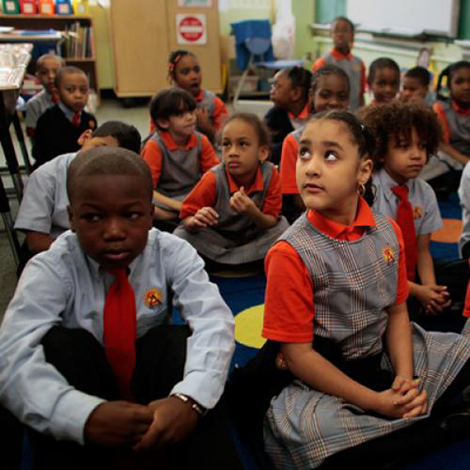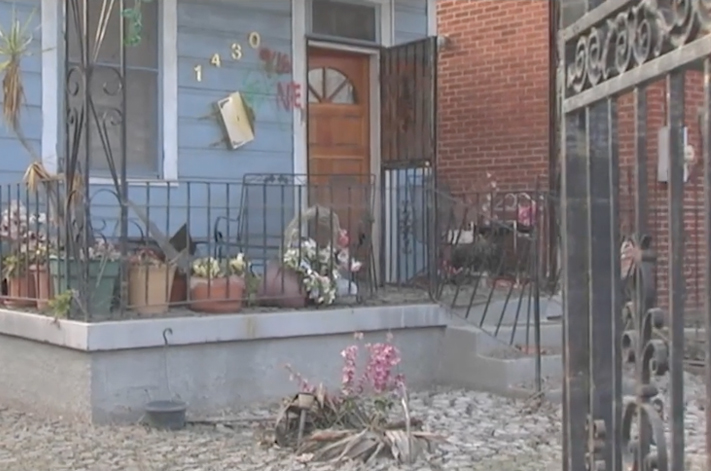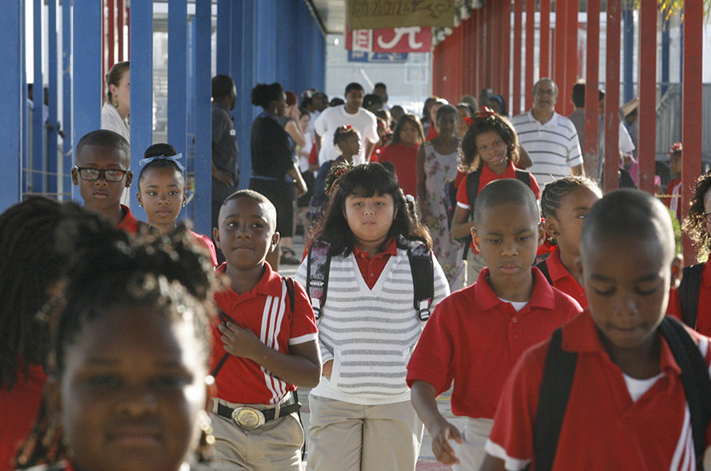Project Description
Why Have We Been So Disappointed? What Have We Learned?
By Richard Rothstein | Originally Published at The Economic Policy Institute.
May 17 is the 60th anniversary of Brown v. Board of Education, the U.S. Supreme Court’s 1954 decision that prohibited Southern states from segregating schools by race. The Brown decision annihilated the “separate but equal” rule, previously sanctioned by the Supreme Court in 1896, that permitted states and school districts to designate some schools “whites-only” and others “Negroes-only.” More important, by focusing the nation’s attention on subjugation of blacks, it helped fuel a wave of freedom rides, sit-ins, voter registration efforts, and other actions leading ultimately to civil rights legislation in the late 1950s and 1960s. But Brown was unsuccessful in its purported mission—to undo the school segregation that persists as a central feature of American public education today. This issue brief highlights key elements of the American education system that have evolved in the wake of Brown:
- Although Brown stimulated a civil rights movement that desegregated many facets of American society, it was least successful in integrating education, the decision’s aim.
- Initial school integration gains following Brown stalled and black children are more racially and socioeconomically isolated today than at any time since data have been available (1970).
- Academic achievement of African Americans has improved dramatically in recent decades, but whites’ has as well, so racial achievement gaps remain huge.
- Schools for black children had enormous resource shortages in 1954. Inequalities still exist in some places, although they are much smaller. But resource equality itself is insufficient; disadvantaged students require much greater resources than middle-class white students to prepare for success in school.
- Expensive but necessary resources include high-quality early childhood programs, from birth to school entry; high-quality after-school and summer programs; full-service school health clinics; more skilled teachers; and smaller classes.
- Even with these added resources, students can rarely be successful in racially and economically isolated schools where remediation and discipline supplant regular instruction, excessive student mobility disrupts learning, involvement of more-educated parents is absent, and students lack adult and peer models of educational success.
- Schools remain segregated today because neighborhoods in which they are located are segregated. Raising achievement of low-income black children requires residential integration, from which school integration can follow. Education policy is housing policy.
- Federal requirements that communities must pursue residential integration have been unenforced, and federal programs to subsidize movement of low-income families to middle-class communities have been weak and ineffective.
- Correcting these policy shortcomings is essential if the promise of Brown is to be fulfilled.
Brown and desegregation
Brown v. Board of Education, the Supreme Court’s unanimous school desegregation decision whose 60th anniversary we celebrate on May 17, had enormous impact. Its narrow result was to annihilate the “separate but equal” rule, previously sanctioned by the Supreme Court in 1896, that permitted states and school districts to designate some schools for “whites-only” and others for “Negroes-only.”1
But more important, the Brown decision focused the nation’s attention on black subjugation in a fashion not seen since Radical Republicans attempted to reconstruct the South after the Civil War. Brown’s 1954 success in highlighting the nation’s racial caste system gave encouragement to a wave of freedom rides to desegregate interstate transportation, to national support for Rosa Parks’ determination to desegregate local buses and other public facilities, to lunch counter sit-ins to desegregate restaurants and other public accommodations, to heroic efforts to register African Americans in the Deep South to vote, and to confrontations over admission of African Americans to southern universities. It also spurred civil rights legislation in 1957, 1960, 1964, 1965, and 1968 that, in combination, undid the nation’s legal support for race-based status. None of this would have taken place without Brown..”2
In 1967, President Lyndon Johnson appointed Marshall to the Supreme Court where he spent the next 24 years in a fruitless struggle to prevent the perpetuation of school segregation, and indeed its exacerbation, after an initial rollback.
Today, things are getting worse. The typical black student now attends a school where only 29 percent of his or her fellow students are white, down from 36 percent in 1980. Subsequently, the courts, over Marshall’s and other pro-integration justices’ objections, began to free southern school districts from orders compelling them to adopt deliberate policies to integrate..”4 In fact, black children are more racially and socioeconomically isolated today than at any time since data have been collected..”5

Photograph; 60 years later. Students in New York’s segregated schools. | Chris Hondros/Getty
Black student achievement and the achievement gap
It is too easy to forget that the Brown decision was propelled not merely by a principled objection to the idea of “separate but equal,” but by Southern states’ unrestrained contempt for the “equal” part of the formula. Black students were not only segregated but wholly denied meaningful educational opportunity. Schools 60 years ago were separate but not equal. In Clarendon, South Carolina, the school system at the heart of the Brown collection of cases, per pupil spending in schools for whites was more than four times the rate in schools for blacks. The capital value of schools for whites was nine times the value of shacks for blacks. The pupil-teacher ratio in schools attended by whites was 28-to-1, for those attended by blacks it was 47-to-1. There were flush toilets in schools for whites and outhouses at schools for blacks; buses transported white students to school while black students walked; schools for whites had janitors while schools for blacks were cleaned by teachers and students themselves. High school vocational programs for whites included typing and bookkeeping, but high school vocational programs for blacks consisted of agriculture and home economics..”8 And so on.
All that ended with Brown. Although not the intent of the Legal Defense Fund, Marshall, or the other plaintiff attorneys, the case did provoke Southern states to make schools for blacks and whites more nearly equal, if still largely separate.
We are today considerably more knowledgeable about the challenges to student achievement posed by race and social class status than we were in 1954, if less motivated to do much to address them. Here is some of what we now know:
Resource equality is not enough
- Children whose parents have less educational attainment and lower literacy levels hear less complex language at home, and are read to less frequently. Narrowing the difference between their school readiness and that of middle-class children requires provision of high-quality early childhood programs, from birth. As a nation, we’ve barely begun to recognize this; public discussion, such as it is, mostly concerns only provision of prekindergarten classes beginning at age 3 or 4, not birth. High-quality early childhood programs (with trained professionals, low child-caregiver ratios, and spacious play areas), as well as nurse home-visiting programs that support mothers to be more effective caregivers, will be very expensive to implement..”9
- New research has shown that the most important predictor for young children of later academic success is the general background knowledge with which they come to school. For very young children, having visited a zoo better predicts reading ability than knowing how to sound out letters that spell animal names. High-quality early childhood programs can help with this for young children from lower-social-class families. For older youth, participation in equally high-quality after-school and summer programs is necessary to boost achievement. Such programs do not stop at academic remediation and homework help, but include field trips, club activity, music, art, and dance, and organized athletics comparable to what middle-class children take for granted. These programs, too, are expensive..”10
- We also now know that for young minority children from lower-social-class backgrounds, smaller class sizes can boost achievement because in such classes, children get more adult attention. Middle-class children, typically from smaller families, not only get academically supportive adult attention at home, but more of it. Lowering class sizes for children who need it most is also very expensive. So is ensuring that such children have teachers who are more skilled than teachers of middle-class children. And children who come to school stressed from segregated neighborhoods with more crime and violence need added support services in school, like counselors and social workers. This, too, is expensive..”11
- Racially isolated neighborhoods typically have fewer primary care physicians, so children living in those neighborhoods typically receive less routine and preventive health care (even if they have Medicaid or private health insurance), contributing to greater absenteeism. They also have unique health problems contributing to lower achievement—for example, iron-deficiency anemia and lead poisoning, or asthma from living in less healthy environments. They tend not to get corrective lenses for vision problems. Putting full-service health clinics, with pediatric nurse practitioners, dentists and dental hygienists, and optometrists, in schools serving disadvantaged students is also an essential component of a narrowed achievement gap..”12
Integration remains essential
In retrospect, the study seems flawed for the purpose for which it was used: When Clark conducted the same exercise with black students in Northern integrated schools, he got similar results, suggesting that it was not school segregation, but a more generalized caste system, present in the North as well, that produced what Warren characterized as a “feeling of inferiority as to their status in the community that may affect their hearts and minds in a way unlikely ever to be undone.”.”13
Today, we know much more about how school segregation itself produces lower achievement for children from lower-social-class backgrounds..”14 Feelings of inferiority are but a small part of the explanation.
- When a few children in a classroom come from homes with less literacy, and without the benefit of high-quality early childhood care, a skilled teacher can give those children special attention. But when most children in that classroom have these disadvantages, the average instructional level must decline. The most skilled teachers must devote more time to remediation, less to new instruction.
- When most or even many children in a classroom are sorely stressed, having endured life in a violent neighborhood, teachers must devote more time to discipline, less to learning.
- When children have been exposed to few college-educated adults (except for their teachers), these children’s own ambitions are inevitably constrained. Parents in such schools do not have the educational backgrounds themselves to be able to monitor curricular decisions. Parent involvement, an essential ingredient of successful schools, consists in such schools mostly of fundraising support and chaperoning field trips.
Segregated neighborhoods lead to segregated schools
As it turns out, the most important school policies are housing policies, and we pursue too few of them, and too weakly. Low-income working families are eligible for vouchers to supplement their rental payments up to market rates, even in middle-class communities, but the voucher program is barely funded, and when families do get vouchers, landlords in middle-class communities typically refuse them, so the vouchers perpetuate rather than reduce segregation..”15 Suburbs maintain zoning ordinances that prevent construction of low- and moderate-income housing, rendering federal subsidies for such housing less useful to combat segregation. Government programs encourage the destruction of public housing ghettos but make inadequate provision for rehousing the displaced residents, many of whom are then forced to leave their gentrifying neighborhoods to seek homes in newly segregating inner-ring suburbs..”16
It is now apparent that we are stuck. Unless we desegregate neighborhoods, we can’t desegregate schools, and unless we desegregate schools, the doors to opportunity for too many black students will continue to be closed.
In a short while, following the conclusion of a comment period, the U.S. Department of Housing and Urban Development plans to issue a rule requiring all municipalities, including white suburbs, to abide by the 1968 Fair Housing Act’s requirement that they follow policies to “affirmatively further fair housing,” i.e., to integrate..”17
Whether and to what extent this rule is enforced will determine whether the failed promise of Brown can be fulfilled.
About the author
Endnotes
2. The 1957 Civil Rights Act established a U.S. Commission on Civil Rights to investigate discrimination in voting rights, authorized the U.S. Attorney General to prosecute violations, and prohibited exclusion from federal juries based on race. The 1960 act improved federal judges’ authority to protect voting rights. The 1964 act required voting eligibility requirements (which it did not eliminate) to be applied to all citizens equally, prohibited segregation in public but privately owned accommodations (motels, restaurants, etc.) as well as in public facilities, authorized the Attorney General to file school desegregation suits, strengthened the U.S. Civil Rights Commission, and prohibited discrimination by state and local agencies receiving federal funds. The 1965 act (the Voting Rights Act) established federal supervision of election procedures, especially in states that had historically discriminated against African Americans’ right to vote; this supervision was recently weakened by the Supreme Court. The 1968 act (the Fair Housing Act) prohibited racial discrimination in the sale and rental of most housing.
3. The most comprehensive account of the Brown case, and the LDF’s long pursuit of desegregation that culminated in Brown , is Richard Kluger’s 1975 book Simple Justice (New York: Random House). In the 1975 two-volume edition, the account of the LDF’s press conference following the Supreme Court’s ruling is found on p. 902, based on the following newspaper articles: New York Times, “N.A.A.C.P. Sets Advanced Goals,” May 18, 1954; Luther A. Huston, “1896 Ruling Upset,” New York Times, May 18, 1954.
4. The 29 percent figure is for 2010. For data on 2010, see Genevieve Siegel-Hawley and Erica Frankenberg, Southern Slippage. Growing School Segregation in the Most Desegregated Region of the Country, The Civil Rights Project, September 2012, revised October 18, 2012, Table 5, http://civilrightsproject.ucla.edu/research/k-12-education/integration-and-diversity/mlk-national/southern-slippage-growing-school-segregation-in-the-most-desegregated-region-of-the-country/hawley-MLK-South-2012.pdf. For data on 1980, see Gary Orfield, Public School Desegregation in the United States, 1968-1980, Joint Center for Political Studies, Washington, D.C., 1983, Table 7. These data and their implications, including a discussion of how racial isolation declined from the Brown decision until 1980, and has increased since then, are discussed in more detail in Richard Rothstein, For Public Schools, Segregation Now, Segregation Since: The Unfinished March, Economic Policy Institute, Washington, D.C., 2013, http://s2.epi.org/files/2013/Unfinished-March-School-Segregation.pdf.
5. The earliest available data are for the 1970–1971 school year from Gary Orfield, Public School Desegregation in the United States, 1968-1980, 1983, Table 7.
6. See Southern Slippage, Figure 3.
7. For a discussion of trends in black student achievement, and the achievement gap, see Richard Rothstein, Fact-Challenged Policy, Economic Policy Institute, Washington, D.C., 2011, http://www.epi.org/files/page/-/EPI_PolicyMemorandum_182.pdf. The report includes detailed referenced tables on NAEP trends, available at http://www.epi.org/page/-/LTT and Main NAEP Tables.xls.
8. A full description of the unequal status of Clarendon County schools, litigated in Brown v. Board of Education , can be found in Simple Justice, pp. 9, 417–418. Kluger also describes conditions in the other districts whose cases were combined with Clarendon County in the Brown decision.
9. For a summary of evidence on the relationship of parental literacy and home intellectual environment to child outcomes, see Richard Rothstein, Class and Schools, Economic Policy Institute, Washington, D.C., 2004, pp. 19–32, http://www.epi.org/publication/books_class_and_schools/. For estimates of the cost of implementing high-quality early childhood education and nurse-family partnership programs, see Tamara Wilder, Whitney Allgood, and Richard Rothstein, Narrowing the Achievement Gap for Low-Income Children: A 19-Year Life Cycle Approach, The Campaign for Educational Equity, Teachers College, Columbia University, New York, 2008, Tables 4–9, http://www.epi.org/files/page/-/pdf/wilder_allgood_rothstein-narrowing_the_achievement_gap.pdf
10. David Grissmer, Sophie M. Aiyer, William M. Murrah, Kevin J. Grimm, and Joel S. Steele, “Fine Motor Skills and Early Comprehension of the World: Two New School Readiness Indicators,” Developmental Psychology 46 (5) (2010): 1008–1017; Class and Schools, esp. pp. 56–59; Narrowing the Achievement Gap for Low Income Children: A 19-Year Life Cycle Approach, Table 11.
11. For a summary of research and debate on class size reduction for disadvantaged students in the early grades, see Lawrence Mishel and Richard Rothstein, eds. (Alan B. Krueger, Eric A. Hanushek, and Jennifer King Rice, contributors), The Class Size Debate, Economic Policy Institute, Washington, D.C., 2002, http://www.epi.org/publication/books_classsizedebate/. For cost estimates on higher teacher quality and reduced class size for disadvantaged students, see Narrowing the Achievement Gap for Low Income Children: A 19-Year Life Cycle Approach, Tables 12–13.
12. Richard Rothstein, He’s Looked at Life from Both Sides Now – or Has He? Arne Duncan Claims the High Ground, but School Clinics Still Face Needless Obstacles, Economic Policy Institute, Washington, D.C., February 26, 2012, http://www.epi.org/publication/education-arne-duncan-school-health-clinics/; Class and Schools, esp. pp. 37-45; Narrowing the Achievement Gap for Low-Income Children: A 19-Year Life Cycle Approach, Table 10.
13. Simple Justice, esp. pp. 99–402, 415–416, 557–558, 680, 689, 702
14. Class and Schools, esp. endnotes 309, 310. For two decades, the Century Foundation’s Richard Kahlenberg has documented the extent to which the concentration of lower-class students in classrooms and schools depresses their achievement. For a recent summary and introduction to other sources, see Richard D. Kahlenberg, Why Economic School Segregation Matters, Furman Center for Real Estate and Urban Policy, New York University, March 10, 2014, http://furmancenter.org/research/iri/kahlenberg. For a discussion of why racial segregation exacerbates economic segregation, see Richard Rothstein, Race Remains the American Dilemma, Furman Center for Real Estate and Urban Policy, New York University, March 10, 2014, http://furmancenter.org/research/iri/Rothstein.
15. Stephanie DeLuca, “HUD Voucher Program Fails to Relocate Families from Poor Neighborhoods,” America’s Wire. Maynard Media Center on Structural Inequity, undated, http://americaswire.org/drupal7/?q=content/hud-voucher-program-fails-relocate-families-poor-neighborhoods-0
16. Susan J. Popkin, Diane K. Levy, Laura E. Harris, Jennifer Comey, Mary K. Cunningham, and Larry F. Buron, “The HOPE VI Program: What About the Residents?” Housing Policy Debate 15 (2) (2004), 385–414. http://dx.doi.org/10.1080/10511482.2004.9521506
17. The Department of Housing and Urban Development provides a summary of the rule and rule text at its “Affirmatively Furthering Fair Housing Proposed Rule” web page, http://www.huduser.org/portal/affht_pt.html. Comments on the proposed rule by the Poverty and Race Research Action Council (PRRAC), and other civil rights groups are available on PRRAC’s website at http://www.prrac.org/full_text.php?item_id=14252&newsletter_id=0&header=Current%20Projects. Forty-five years ago, HUD proposed similar action, but it was cancelled by President Nixon. For an account, see Richard Rothstein and Mark Santow, A Different Kind of Choice, Economic Policy Institute, Washington, D.C., 2012, http://www.epi.org/files/2012/Different_Kind_Of_Choice.pdf.
See more work by Richard Rothstein










